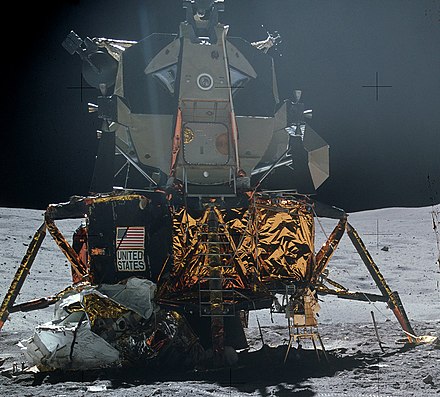Portal:Spaceflight/Selected picture
This is the selected picture subpage of the Spaceflight Portal.
Usage
The layout used to format these sub-pages is at Portal:Spaceflight/Selected picture/Layout
- Add a new selected article to the next available subpage.
- Update
"max="to new total for its{{Random portal component}}on the main page.
Selected picture 1
Portal:Spaceflight/Selected picture/1

Selected picture 2
Portal:Spaceflight/Selected picture/2

Selected picture 3
Portal:Spaceflight/Selected picture/3

Selected picture 4
Portal:Spaceflight/Selected picture/4

Selected picture 5
Portal:Spaceflight/Selected picture/5

Selected picture 6
Portal:Spaceflight/Selected picture/6

Selected picture 7
Portal:Spaceflight/Selected picture/7

Selected picture 8
Portal:Spaceflight/Selected picture/8

Selected picture 9
Portal:Spaceflight/Selected picture/9

Selected picture 10
Portal:Spaceflight/Selected picture/10

Selected picture 11
Portal:Spaceflight/Selected picture/11

Selected picture 12
Portal:Spaceflight/Selected picture/12

Selected picture 13
Portal:Spaceflight/Selected picture/13
.jpg/440px-ORBCOMM-2_(23282658734).jpg)
Selected picture 14
Portal:Spaceflight/Selected picture/14

Selected picture 15
Portal:Spaceflight/Selected picture/15

Selected picture 16
Portal:Spaceflight/Selected picture/16

Selected picture 17
Portal:Spaceflight/Selected picture/17
.jpg/440px-DM-2_Falcon_Rollout_(cropped).jpg)
Selected picture 18
Portal:Spaceflight/Selected picture/18
.jpg/440px-The_SpaceX_Crew_Dragon_approaches_the_International_Space_Station_(iss063e021463).jpg)
Selected picture 19
Portal:Spaceflight/Selected picture/19
.jpg/440px-Falcon_Heavy_Demo_Mission_(39337245145).jpg)
Selected picture 20
Portal:Spaceflight/Selected picture/20
Additions
Feel free to add any featured or good articles to the list above.
Current
- April 2024
Selected picture
 |
| This is a composite of images taken of Pluto and Charon during the fly-by of New Horizons on July 14, 2015. The image has been compiled so their relative positions and sizes are correct. Both images were taken by the Multispectral Visible Imaging Camera (MVIC) on the Ralph telescope experiment. The image of Pluto was taken from a distance of 150,000 miles (240,000 km). |
Archive
For older selected pictures, please see the Archive, for Space exploration portal selected articles, see this archive
Template
{{Portal:Spaceflight/Selected picture/Template|Image name|Caption|Size (optional)}}